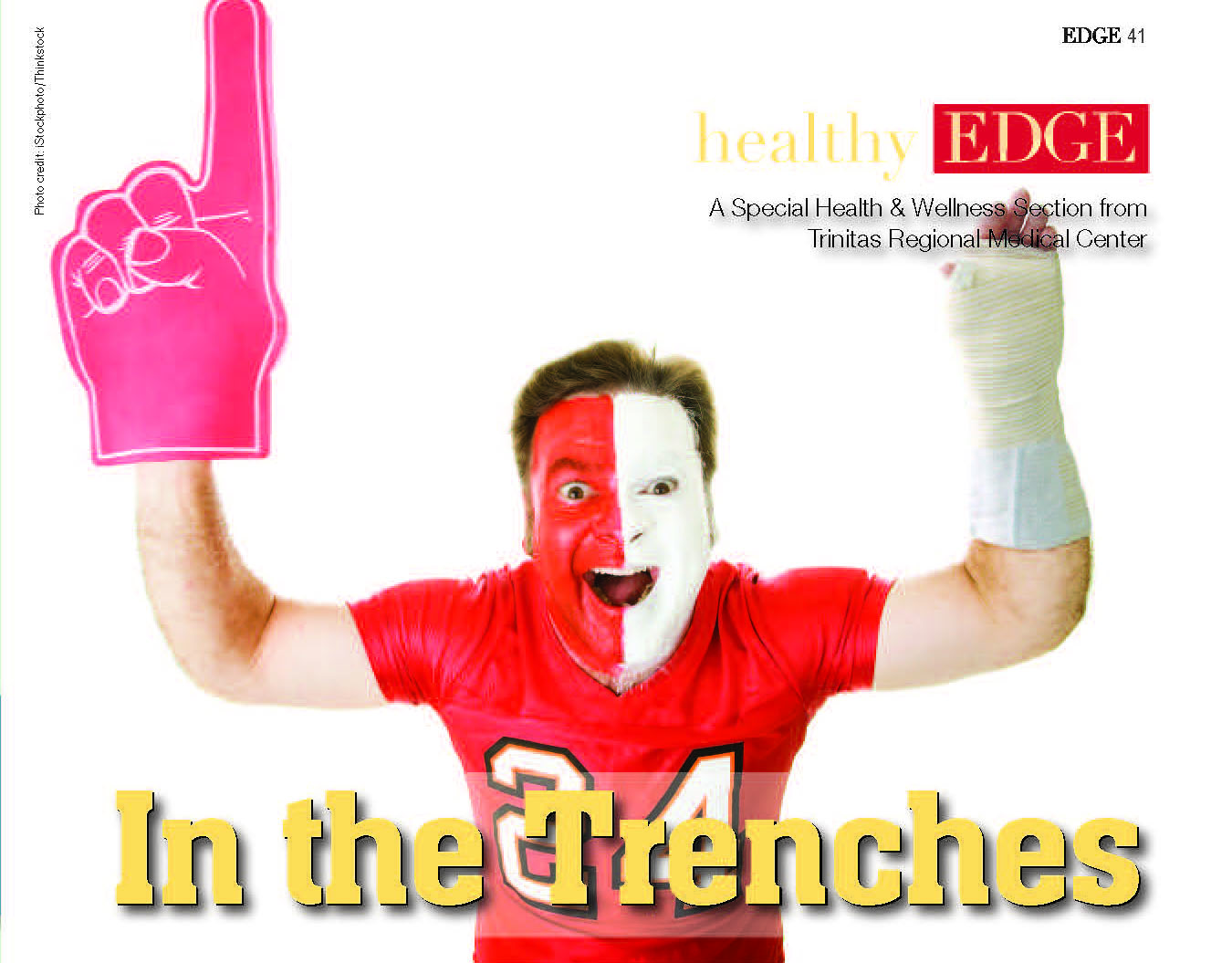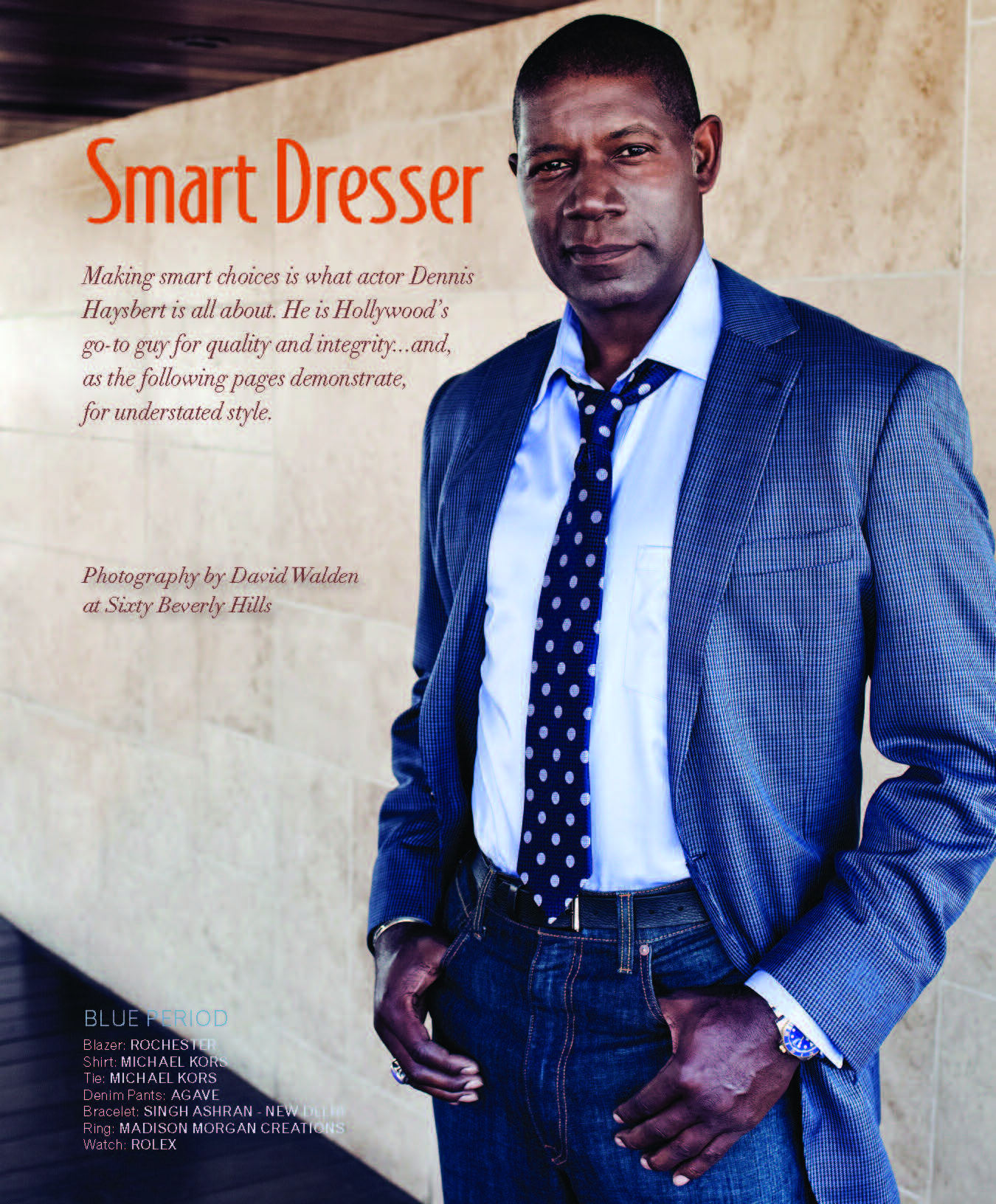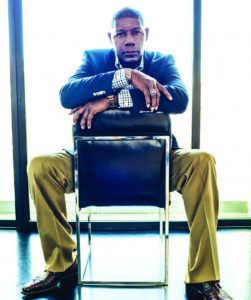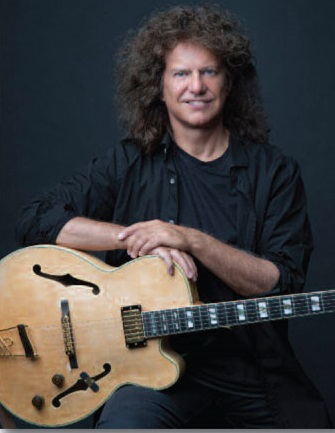“Makeda ups the ante for restaurants that aim to do right by other than animal products.”
338 George St., New Brunswick. Phone: 732.545.5115
Hours: Lunch, Monday through Friday from 11:30 a.m. to 4 p.m. and Saturday from noon to 4 p.m. Dinner, Monday through Thursday from 4 to 10:30 p.m., Friday and Saturday from 4 to midnight and Sunday from noon to 10:30 p.m. The bar is open until 1 a.m. on weeknights and until 2 a.m. on Friday and Saturday nights. It’s open until midnight on Sundays. There is live music on Friday and Saturday nights. Reservations are accepted, as are all major credit cards. Prices: Appetizers and salads, $7.50 to $15.50. Entrees: $24 to $37. Vegetarian entrees are $15 to $25.50.
I wasn’t surprised when a professor pal of mine at Rutgers suggested Makeda as our lunch spot: We both love learning, adventure at the table, and foods that take us away from anything resembling an edible routine.
Makeda, the first Ethiopian restaurant to make a fine-dining statement in New Jersey, is a natural for New Brunswick, a college town that plays home to both mainstream and ethnic restaurants, lavishing equal affection on well-played versions of the normal and the novel. My friend and I were in complete agreement: Why grab a sandwich billed on a thousand menus when we could gab over fare rarely offered elsewhere? Makeda it was.
It’s a restaurant that pops into my mind whenever I want to veer from anything standard-issue. It tends to delight newcomers even as it defies expectations, for the menu is a trip to a land of new ingredients and new juxtapositions of familiar foods.

Photo credit: iStockphoto/Thinkstock
The eating itself flies in the face of American tradition. The conduit of food between platter and mouth is Ethiopia’s beloved injera bread, a spongy, grainy number that’s something like a thick, large crepe in appearance, but tastes engagingly sour and is used to scoop up pretty much everything served at Makeda. That mild lemony flavor clicks on all cylinders with a variety of headliners, including lamb, chicken, seafood, beef and vegetables. Every time I’m at Makeda and wrap strips of faintly sweet lamb with vigorously seasoned onions in a torn-off piece of injera and warm to the scheme of everything-in-one-bite, I wonder why more contemporary chefs don’t steal from Ethiopia’s culinary playbook.
That’s exactly what friends who went with me one recent night to sample around Makeda’s menu thought. And if they were hesitant about diving into the communal platters concocted by the kitchen so we could better share the diverse dishes we’d ordered, they certainly didn’t act a smidgen shy.
Minchetabesh, ground sirloin infused with cardamom, garlic and ginger, and liberally doused with white pepper, is pan-seared with sliced onions to make it ready for rolling in the tangy injera. Though the concept may have you thinking hamburger, the finished dish is high-toned and beguiling. It offers the same attitude as the zil-zil, those strips of lamb marinated in Ethiopian honey wine with onions and garlic, then fried in butter which makes the meat crusty, but locks in the seasonings and juices. Cosseted in the injera, it’s something my dining companions can’t stop eating.
We can’t stop talking about how plain old delicious the doro wat is, a classic Ethiopian entrée of bone-in chicken parts that have done time in a lemon marinade before being briskly sautéed with the reigning triumvirate of fenugreek, ginger and garlic. The dish is finished with a dash or three of berbere, a feisty spice mixture that’s heavy on the ground chilies but tamed by baking spices – nutmeg, cinnamon and cloves. We slice the hard-boiled egg served with our chicken and tuck every component of the dish into the foamy bread. My pals have gotten the hang of what, only a short time earlier, was newfangled finger food.
Ethiopian food is vegetable- and pulse-centric, and Makeda ups the ante for restaurants that aim to do right by other than animal products. Take the mesir wat, lentils and onions slow-cooked with garlic and ginger in a berbere that’s calmer than the chilies-rich mixture used in the doro wat. It’s both comforting and cunning, a stew that’s decidedly rustic, but sophisticated in its layering of multiple warming seasonings. If you want more vigorously spiced lentils, go for the mesir azefah, which plays green lentils off a hotter backdrop of accents that include jalapenos, mustard seeds and white pepper. Served cold, it’s something you might want to share as a starter.
Speaking of which, appetizers aren’t part of a typical meal in Ethiopia. So the kitchen crew here, guided by owner Ogbe Guobadia, borrows from cuisines in North Africa, most notably Morocco, for its starters and even throws in a salad or two. Skip the salads, which truly do seem out of place, and kick off dinner with loubia, a sauté of string beans in lots of parsley given a lift from cumin, ginger and garlic. They’re pleasingly soft, as many vegetables are in the Middle East, Eastern Mediterranean and North Africa, and work in tandem with the zaalouk, a perky chop of eggplant pan-fried with the same accents, then sprayed with fresh lemon juice before hitting the plate.

Photo credit: iStockphoto/Thinkstock
I usually snag the kefta when dining at Makeda, finding those Moroccan meatballs powered by crushed red pepper irresistible, but this time out I ordered a accented opener of shrimp simmered in peppery orange juice, then served with wedges of orange juice and tomatoes. The shrimp were overcooked and the orange not integrated into the shellfish. Next time, I’ll stick with the meatballs.
I wish Makeda wouldn’t stick to its all-American desserts. The folks here can do better than carrot cake that’s done too much time poorly covered in the fridge. Even if it’s something very simple—again borrowing from Morocco—such as cookies studded with nigella seeds or oranges in orange flower water, it would do more in keeping with the mission of Makeda. Right now, there are no grand finales at a restaurant that deserves a rousing finish.
Makeda, born in 1996, is a fixture in New Brunswick. People who live in the city, those who work at or attend Rutgers, are proud to show it off to visitors: It’s unlike anything else in the state, it sports a lively scene—especially on Friday and Saturday nights when live bands take center stage—and it proves restaurants in New Jersey aren’t always focused on Italian-American standards. Give Makeda an “A” for inspiration.
Editor’s Note: Andy Clurfeld is a former editor of Zagat New Jersey. The longtime food critic for the Asbury Park Press also has been published in Gourmet, Saveur and Town & Country, and on epicurious.com. Her post-Sandy stories for NBCNewYork.com rank among the finest media reporting on the superstorm’s aftermath and recovery.
 Exotic Collegiate
Exotic Collegiate
If you ever went to Tumulty’s in the old days, Makeda may strike you as a brave new century in college town dining. It’s got the requisite large and happy bar and a space that, if the ceilings weren’t so high, could be called cavernous. But comparisons to a typical collegiate hangout stop there.
Makeda sports African artwork through its dining spaces, both in the private rooms and the main dining areas. A long banquette fronted by tables for two (or four) is upholstered in colorful fabric that avoids stereotype but feels vividly African. The wood and glass that define the spaces are angular and striking. It’s a scene that melds modern times with Ethiopian/African traditions.
How to turn your second home into a third one. And fourth one. And fifth one…
By J.M. Stewart
There is a new kind of “key party” happening out there. Chances are, you already know someone who’s doing it. Hold on—it’s not what you think. The only things being swapped are the keys themselves. The Home Exchange industry has taken off in recent years, thanks to a combination of factors that have convinced thousands of vacationers to look at their vacation dollars in a completely different way.
 Technically, home swapping is nothing new. It has been around for a while. The basic idea is trading vacation time in your home for vacation time in someone else’s. This can be done in a few different ways with different types of properties. In most cases, however, owners of second homes are bartering unused time in their vacation properties for unused time in other people’s second homes. Who wouldn’t want to trade that sparsely used month at the Jersey Shore for a Paris apartment or a hilltop mansion overlooking the Caribbean?
Technically, home swapping is nothing new. It has been around for a while. The basic idea is trading vacation time in your home for vacation time in someone else’s. This can be done in a few different ways with different types of properties. In most cases, however, owners of second homes are bartering unused time in their vacation properties for unused time in other people’s second homes. Who wouldn’t want to trade that sparsely used month at the Jersey Shore for a Paris apartment or a hilltop mansion overlooking the Caribbean?
More than 20 home exchange companies have sprung up in the last two decades, which tells you some-thing about which way this industry is headed. Not coincidentally, during that same time the timeshare industry has cratered. A major reason for the rapid growth of home exchange clubs is the Internet, which enables home-swappers to peruse vacation properties, read personal reviews, and upload comments and photos of their own after each stay.
According to Steve Zacks, a principal at 3rd Home, a leader in the luxury segment that features over 1,700 residences with an average value of $2.25 million, “There is complete transparency in the program.” The company’s web site features comprehensive listings on each home, and guests are encouraged to write a review after each stay—which is then featured unedited on the property page and in the testimonials section.
There are three basic types of home exchanges:
- Hospitality Exchange You stay in someone’s home while the host is there. This might be in a spare bedroom—bed-and-breakfast style—or perhaps a guesthouse. It is an interesting budget option.
- Simultaneous Exchange This is when you literally switch homes—you’re in their home, and they’re in your home at the same time. Companies like IVHE Vacation Home Exchange, in England, function as facilitators. People who like this option find it interesting to vacation in a home filled with someone else’s personal belongings.
- Non-Simultaneous/Non-Direct Exchange You “pool” your vacation home availability with like-minded individuals and then pick the property you want to visit, at a time when you want to travel. It is not your responsibility to find someone who wants to trade with you. This type of service is offered by the elite-level home exchange companies. The vacation properties in pooled exchanges can be valued from $500,000 into the millions, and have club rules, regulations and controls in place to promote a consistent luxury experience.
SO, WHO’S STAYING IN MY HOME?
Good question. Luxury companies vet potential members through referrals and social networking. Every member must comply with the terms and conditions set forth in a company’s guidelines. Non-compliance can result in expulsion. But according to Zacks, “Members pay it forward. It is a private club. Our members, all of whom have their vacation homes in the program, treat each property they visit as if it were their own. Many have created new friends in the process
In less-exclusive simultaneous exchange situations, it is up to the homeowners to work things out. This involves a fair amount of personal contact—and also being comfortable with strangers occupying your primary residence. It’s not for everyone, but for some this is part of the adventure. As one happy swapper says, “When I talk to my exchange partners either on the phone or over the Internet, I just use my gut to get a sense of them. And, I take common-sense precautions, like putting our valuables in an off-limits room when people stay here. My family and I have been doing this for years now, and we’ve never had a problem.”
3rd Home is representative of the high-end home exchange companies in that it only handles second (or third, or fourth) homes. Love Home Swap, by contrast, will work with primary homes, which can involve some tricky logistics. Many companies do a little of both, including IVHE out of England. Others still, like Air B&B, can arrange a room swap. Needless to say, however you go, it is an economical way to travel because you are paying a tiny percentage of typical resort charges or house-rental fees
 THINKING LOCAL
THINKING LOCAL
There is an ancillary benefit of home exchange to surrounding economies: An empty home generates no revenue for nearby businesses, while a home occupied for a couple of weeks by a family that has saved a bundle in rental fees will be a big win for the local shops, restaurants and other tourism-reliant enterprises.
Business is booming in the non-simultaneous exchange sector. Among the many reasons for this growth is that a lot of people built or purchased second homes as investment properties during the real estate boom of the last decade, and now find themselves unable to resell, rent or use the homes as frequently as they had originally anticipated. Or perhaps they have had many years of enjoyment and now are ready for new experiences. Filling those homes with like-minded vacationers—while racking up credits for your own vacation adventures—makes sense. On the flipside, as the person doing the vacationing, you save thousands of dollars in a single trip, and can bring the entire family (and even a couple of friends) to boot. Indeed, in many parts of the world, you might be amazed to find vacation homes with between 5 and 10 bedrooms.
Depending on the company, the cost of vacationing in a fabulous home in an exotic locale averages between 5 to 10 percent of the rental cost were you to go through a local realtor on a short-term stay. In addition, all companies charge some sort of membership fee to be part of the program
POINT TAKEN
Trade to Travel and 3rd Home run on point systems. You get out of the program what you put in. For example, Trade To Travel requires a one-time-only initiation fee of$2,500, but if you make your home available right away (within the first six months of joining), this fee is waived. The more weeks you offer up your house—and the more often your home is used—the more points you accrue. These points are then “cashed in” for a trip. 3rd Home employs a similar kind of credit system that takes into account the value and location of your home, as well as the time of year the home is made available. A high season like Spring Break will garner more credits than a less in-demand time of year. One of the more appealing aspects of this arrangement is that homeowners begin racking up credits the moment unused blocks are deposited into the system, and thus can book their own vacations right away. It’s an economy unto itself.
Timing is everything, of course. If you are considering a home swap, it’s best to plan a trip to, say, Europe at least 3 or 4 months in advance, just to allow yourself the opportunity to pick from a greater variety of locations. Some of the choicest properties come off the board a year in advance. Remember that many of these homes are listed as vacation rentals with local realtors, and the owners of these homes still use them for their own vacation time, so it’s not just home-swappers vying for them. Most companies accept a one-week minimum visit to a home. One home exchange company reported a stay that lasted 6 months. Now, that’s a vacation!
When it comes to luxury properties, there are basically two distinct tastes among travelers. Some want the total residence-club experience, while the more adventurous prefer to go native and fly solo. No problem, several companies cater to both of these personalities. If you’re in the mood for a little pampering, but still want to live like a local, many vacation homes include a staff to cook and/or clean for you. And every home has some sort of local contact or caretaker to answer questions and deal with emergencies. Also, homeowners typically provide a long list of instructions and recommendations for their guests. For those who prefer the top-flight amenities a hotel offers, the higher-end companies have affiliate relationships with residence clubs and developments. 

Special thanks to
3rd Home for supplying
the images for this story.
NOT FOR EVERYONE
As appealing as home exchanges sound, they are not for everyone. If you are the kind of person who needs to adhere to a strict timeline with a very specific locale, home exchange programs might not be for you. If you neurose over other people using your things—even if they’re just your “vacation things”—then, again, home exchange may not be a good fit.

However, if you are flexible in your schedule or location, you can go to top-notch destination spots with great frequency for a fraction of the price.
3rd Home, for example, is affiliated with Trump International and includes Trump International Hotel and Towers in New York, the Reefs Club in Bermuda and The Residences at the Chateaux in Deer Valley.
Thanks to home exchanges, enjoying the carefree life of travel and staying in some tremendous properties has never been easier. Pick a club t

o join, list your home, and then start looking for your next vacation destination. Not only will you save buckets of money but, as one homeowner put it, “It feels great to put my empty vacation home to work for me…instead of vice-versa.”
The last line of defense at the Super Bowl is not what you think.
By Alison Hemstitch
You wouldn’t believe the things a “house doctor” sees at a football game. So says Dr. Kevin Lukenda, Chairman of the Family Medicine Department at TRMC. Dr. Lukenda has been working two to three events a month at the Meadowlands Sports Complex for a dozen years.

Photo credit: iStockphoto/Thinkstock
MetLife stadium holds 85,000 people including employees. When the stadium sells out a football game, concert or soccer match, it is essentially a small city with the same potential for 911 calls and problems that a city would encounter on any given day. The Meadowlands Sports Complex has its own EMS, Fire, Safety Services and Maintenance Departments, among others. The physician on duty for an event handles everyone’s medical problems—from colds to falls to life threatening situations such as heart attacks, strokes and diabetic emergencies. The staff also sees its share of stadium-exclusive issues, like moths dive bombing into the ear canals of guests sitting in the upper level near the lights.
So what does Dr. Lukenda consider a normal day at a New Jersey sporting event?
“Respiratory and cardiac issues are the normal fare,” he says. “Essentially our fans bring a full complement of their chronic illnesses with them to events at the Sports Complex, some of which are exacerbated by the weather, walking a distance into the buildings, or the food and beverage they consume at the tailgate parties they attend. Tailgate parties can be quite elaborate, fully catered affairs.”
The Meadowlands Sports Complex, which is owned by the state and managed by the New Jersey Sports and Exhibition Authority, is the only sports venue in the state that has its own Medical Team of physicians, nurses, EMTs and ambulances that are managed by a Medical Director, EMS Director and EMS Coordinator, who plans the EMS coverage for all the events.
For the Super Bowl, Dr. Lukenda was one of eight physicians stationed in various medical rooms throughout the stadium. This job required the physicians and staff to have in-service training prior to each NFL game this season to prepare them for anything that might be thrown at them come the Super Bowl game.
Normally, Dr. Lukenda’s job is to administer to fans and employees, but after rock concerts, he is occasionally called upon to treat a performer. “Some of those guys leave it all out on the stage and come back to their dressing room spent or dehydrated,” he says (but won’t say who). “These acts go on tour and depending on how long they have been touring, they start to get ill from the long hours and the demands of the road. We are their on-the-road, so to speak, physicians. What a rush when you first get to treat a celebrity.”

Kevin Lukenda, DO Chairman, Family Medicine Department, TRMC 908.925.9309
Dr. Lukenda says, “I love working at the Sports Complex. It is a totally different feeling than the office and hospital. You get a bit of an adrenalin rush being so close to the action.”
 CHAMPS IN CAREGIVING
CHAMPS IN CAREGIVING
Dr. Edna Bacarro, Certified Nurse Midwife Marietta Jones, and RNs Danielle Passafiume and Cecilia Amaro display the hardware they brought home from the 2nd annual SimWARS at the Regional Perinatal Simulation Center at Saint Barnabas Medical Center. The Trinitas OB/GYN team members finished in first place, surpassing the competition in teamwork, communication, and clinical decision-making abilities in a patient care setting that used high-fidelity simulated patients.
 KING FOR A DAY
KING FOR A DAY
Friend of EDGE Ron Shovlin shows off his newly named Shovlin Mattress Factory. The company is located in Fanwood and has been producing mattresses—right here in Jersey—for over 30 years.
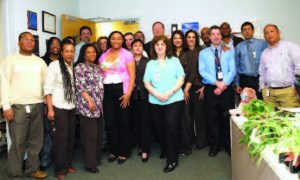 THE VIEW FROM THE TOP
THE VIEW FROM THE TOP
HealthcareIT News, published by Health Information Management and Systems Society, recently announced that in its 3rd Annual “Where to Work” Best Hospital IT Departments Program, the Information Technology (IT) Department of Trinitas topped its list of 10 Best Hospital IT Departments nationwide among medium-sized hospitals having 26 – 75 members. This bested the Trinitas IT department’s previous ranking in the 2012 Top 10 list.
 KNOWLEDGE IS POWER
KNOWLEDGE IS POWER
Trinitas’ own Lucy Esralew, PhD, administrator of the S-COPE (Statewide Clinical Outreach Program for the Elderly), will assist the Felician College External Advisory Board for the Institute for Gerontology as it examines its role in addressing the needs of the aged. As developer of S-COPE, Dr. Esralew established the state-wide network of clinicians who help nursing homes and assisted living facilities respond to senior mental health needs.
 GRANT EQUALS HELP
GRANT EQUALS HELP
The Hospital Elder Life Program (HELP) at Trinitas now reduces cases of hospital-acquired delirium among the senior population. A multi-disciplinary team of healthcare professionals has successfully reached more than 550 patients since March 2013. The Hospital-Acquired Delirium Project was made possible by a$100,000 grant from the Healthcare Foundation of NJ.
HELP Intervention Assistant Diana Noboa and HELP volunteers Adriana Dominguez and Rosa Alexandra spend time with patient Armande Samanamud.
 MOONLIGHTING
MOONLIGHTING
Union County Clerk Joanne Rajoppi celebrates publication of her new book, New Brunswick in the Civil War: The Brunswick Boys and The Great Rebellion at the Towne Book Store in Westfield. Rajoppi is flanked by two new fans, Paula Long of Westfield and Christine Bennett of Summit.
 CODES RULE
CODES RULE
Have you ever suffered a bite from an animal, crustacean or another person? Thankfully, there are numbers assigned to the more than 60,000 new codes of the World Health Organization’s latest version of its International Classification of Diseases (ICD). As information management meets patient care and safety, here’s hoping that Trinitas won’t be treating anyone suffering from ICD-10 W52.0…a human bite inflicted during a stampede!
 MORE THAN A BAND AID
MORE THAN A BAND AID
New Jersey hospitals serve 18 million patients each year, regardless of their ability to pay. According to the New Jersey Hospital Association’s (NJHA) 2013 NJ Hospitals Economic Report, the state’s hospitals contributed a record $20.4 billion to the Garden State economy in 2012. As a safety net hospital, Trinitas provided in excess of $46,000,000 in charity care, $2,000,000 more than the federal and state allotments it receives to meet the needs of the uninsured and underinsured.
It’s March 1st…Do you know where your kid’s ‘camping’ this summer?
By Diane Alter
As competition for summer sleepaway camp dollars becomes more extreme, so too does the range of camp experiences. While you may not want to send your kid to Ninja Camp or Explosives Camp (yes, they do exist) a growing number of parents are picking places that push the envelope and promise to explore the limits of their child’s body and/or intellect in new and imaginative ways. Indeed, more and more parents are packing up their troubles—er—pride and joy, and sending them off to exciting, out-of-the-box summer camps. Some run for a week or two, while others go for a month or more. One interesting trend is the mix-and-match approach, where you cobble together a summer of fun from two, three or four of the shorter-duration camps.
From Culinary Camp in Vermont to Spy Camp in D.C. to Stunt Camp in California to Fiji Shark Camp, today’s camps go beyond classic fun. And unlike back in the day, when mattresses were lumpy, mosquitoes pesky and food tolerable at best, many of today’s niche camps rival the best resorts.
In these pages are some interesting options to use as a starting point. Whether you pick upscale, thrilling, educational, a little of everything or something in between, remember that long after tans fade and badges of honor are shelved, your child’s camp memories endure.
Step Right Up • Camp Winnarainbow
Situated in the picturesque foothills of Mendocino County in Northern California, this 35-year-old camp lets kids ages 7-14 learn every aspect of circus life, from stilt walking to juggling to clowning to riding a unicycle. Kids can also swing on a trapeze, walk a tightrope, learn magic and sharpen their comedic timing. Winnarainbow also features sleeping tipis (teepees) and restaurant-worthy meals. On pick-up day of every two-week session, the campers perform a final show for parents and friends.
Camp Winnarainbow • campwinnarainbow.org
+ Games • Teen Extreme Youth Camp
Teen Extreme Youth Camp in Florida is one of many places around the country that blends spiritual development (in this case, Christian) with non-stop activities. Using the Sports Center facilities on the Pensacola Christian College campus, the camp boasts one of the largest indoor rock climbing walls in the U.S., an inline skating track, indoor water park with surfing and water slides, and paintball competition. Other activities include ice skating, bowling, racquetball, basketball and swimming. Music competitions are also available, as are programs in computer science, art, drama, volleyball, nursing, pre-med, science and history. It’s open to ’tweens and teens grades 7 to 12.
Teen Extreme Youth Camp • teenextremecamp.org
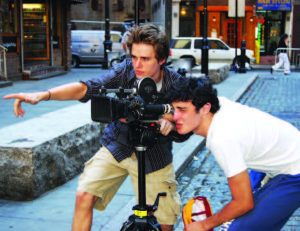
Photo credit: New York Film Academy
And…Action! • Film Academy Camp
So, your kid’s the next Spielberg. Or Denzel. Or Cronkite. Whether a child aspires to a career in acting, filmmaking, musical theater, video design or broadcast journalism, this camp may well be the most intensive, hands-on and authentic in the world. Campuses include Harvard and Yale Universities, Universal Studios Hollywood, and Disney Studios in Florida, Paris, Florence, London and Australia. Camp classes inspire creativity and provide invaluable insider industry insight and experience for students ages 14 to 17. Dazzled by Hollywood guest speakers, campers also attend TV tapings and movie premieres. Bunkmates include the offspring of some of Hollywood’s biggest stars. Lodgings include college dorms and apartments situated across the street from site locations, as well as hotels.
Film Academy Camp • nyfa.edu/summer_camp/

Photo credit: iStockphoto/Thinkstock
Dig This • JurrasiCamp
Forget the plastic dinosaurs and playground sandboxes, JurrasiCamp in Florida encourages kids to get dirty in a quest to unearth genuine dinosaur bones. Campers learn about these legendary creatures and are introduced to them to paleontology—while actively working on digs. Kids even get to take home authentic fossils they excavate from specially designed dig boxes. Other activities include swimming, bowling, and field trips. Open to children aged 5-14, JurassiCamp has been in business as a day camp for 25 years in Miami, Boca Raton and Vero Beach.
JurrasiCamp • funcamps.com
Ups & Downs • Roller Coaster Camp
The only one of its kind in the U.S., this camp takes kids ages 12 to 16 all over the country to ride some of America’s most amazing scream machines. Celebrating 10 years in operation, the Woodbridge (NJ) head-quartered Thrill Coaster Tours offers five-, six- and eight-day roller coaster tours to various parts of the USA. Each day brings a different park and a different stomach-dropping experience of twists, turns, ascents and plunges on diverse roller coaster tracks. Closely supervised groups of six arrive at parks early and stay late. “We do take the kids for a nice dinner somewhere outside of the park to regroup and get them out of the sun before returning for more nightly fun,” Ira Gordon, Thrill Coaster President says. “We’re parents’ answer to a kid’s summer dream of visiting a plethora of amusement parks.” Additional activities include jet-boating, laser tag, rock climbing and more. Stays are at cushy Marriott hotels.
Roller Coaster Camp • thrillcoastertours.com

Photo credit: iStockphoto/Thinkstock
Think Global • West Coast Connection
One of the largest student travel companies in North America, West Coast Connection has been treating teens to summer travel adventures for 32 years. Programs run the gamut from traditional Teen Tours to Community Service Trips to Language Immersion Journeys to Pre-College Enrichment Adventures. North American programs include surfing in San Diego and exploring in National Parks. European programs offer Italian cooking-school lessons, skiing or snowboarding in the Swiss Alps, a gondola ride in Venice, a play at a

Photo credit: iStockphoto/Thinkstock
London theater and swimming the grottos of Capri. Australian adventures include snorkeling on the Great Barrier Reef. Programs in Israel offer the opportunity to float in the Dead Sea and a visit to the Western Wall.
West Coast Connection Student Travel • westcoastconnection.com

Photo credit: Guard Up, Inc
Dead On • Zombie Summer Camp
It’s never too early or imprudent to prepare for the zombie apocalypse, right? Campers at this Massachusetts locale prepare for such a scenario by learning survival skills, basic first aid (invaluable after a zombie scratch), solving life-threatening mysteries, defending their fragile land, foraging for supplies, navigating a maze and fighting off the walking dead using NERF-type weapons. Day camps are offered for kids ages 7 and up, while overnight zombie camps are available for kids aged 10 and over. Kids who prefer not to engage in battle can opt out, and levels of scariness vary.
Zombie Summer Camp •zombiesummercamp.com
SMOOTH JAZZ STYLINGS

More than 150 jazz lovers gathered on November 9th at NJPAC for a one-night only concert of Grammy-winning artists for the 2nd Annual Jazz Celebration. Generous supporters, including renew-ing event sponsors Crothall & Morrison, ensured the event netted approximately $45,000 for the Trinitas Health Foundation.
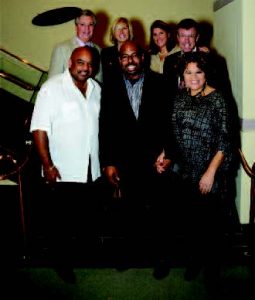
TRINITAS HEALTH FOUNDATION RAISED $14,000 ON GIVING TUESDAY
All Funds Support Pediatric Patients
On December 3, 2013, $14,000 was raised on GivingTuesday. It may seem a little surprising, but no one before designated a specific day to help launch the holiday charitable giving season until last year. All GivingTuesday contributions were directed to the Trinitas Pediatric Health Center. Annually, more than 20,000 children visit Trinitas, their community hospital, to seek care and these numbers only continue to grow.
Every child should have a healthy start to life and Trinitas is there to provide children fr om birth through adolescence with immuniza-tions, preventive, well-child, sick-child and follow-up care through two pediatricians and a bi-lingual staff. “All gifts magically doubled due to the generosity of Foundation trustees Edward Dee, Grant Hobson, Gary Horan, Thomas Kachelriess, Kevin McCloskey, Jan Margolis and Paul Napoli,” said Nadine Brechner, Vice President, Chief Development Officer of Trinitas Health Foundation.
om birth through adolescence with immuniza-tions, preventive, well-child, sick-child and follow-up care through two pediatricians and a bi-lingual staff. “All gifts magically doubled due to the generosity of Foundation trustees Edward Dee, Grant Hobson, Gary Horan, Thomas Kachelriess, Kevin McCloskey, Jan Margolis and Paul Napoli,” said Nadine Brechner, Vice President, Chief Development Officer of Trinitas Health Foundation.
Because of you, Trinitas gives children access to vital health serv-ices ensuring their physical well-being. Thank You for supporting GivingTuesday!
 THE CLARA & SOL KRAMER WING DEDICATION
THE CLARA & SOL KRAMER WING DEDICATION
Family and friends were welcomed to The Clara & Sol Kramer Wing – TRMC’s first-ever wing naming. All joined together to recognize and reflect on the generosity and dedication of the Kramer Family to Trinitas, their community hospital. Almost 90 generous benefactors contributed $500,000 to make The Clara & Sol Kramer Wing a reality.
Score One for Sports… Literally
By Steve Urena
Offer kids an opportunity to attend a writing camp, and you’re likely to be greeted with blank stares. Offer those same kids a chance to write about sports and it’s a whole new ballgame. That’s the concept behind Write On Sports, the brainchild of veteran sportswriter and editor Byron Yake, who opened the afterschool program and summer camp in 2005. Since then, hundreds of aspiring scribes have pursued their passion, while honing skills that will serve them for a lifetime.
Yake, who worked for the Associated Press for two decades, wanted to give back to the journalism community by passing down his knowledge to the next generation of sports journalists. The Write On Sports director designed his program so that children could strengthen their communication and literacy skills by using sportswriting as a learning tool. The high-interest subject matter keeps them motivated, as does the 4:1 student-to-instructor ratio.
Write On Sports has focused primarily on middle- schoolers in order to prepare them for high school and beyond. One of its success stories, Kevin Lopez, parlayed his success in the program to become class valedictorian at Newark Technology High School for 2012, and now attends Princeton University. Lopez credits his own personal successes to being a three-time participant in the Write On Sports program.
“Write on Sports helped me, overall, in school,” he says. “My self-expression skills have improved and a blank piece of paper is no longer a fear. Before, I used to think writing was something they made us do. Now it’s something I like to do.”

Among the high points of the program are the visits from working sportswriters, including writers from The Daily Record, The Star-Ledger, Sports Illustrated, ESPN The Magazine and several TV and radio stations. During Super Bowl week this year, NFL writer Peter King took four young writers out to lunch to talk shop. Another popular feature of Write On Sports is attending and writing about live games, as well as interviews with players and coaches. The curriculum has expanded to touch on sports blogging and also video journalism, with the kids getting to work with microphones and video editing equipment.
“Seeing children who are not very confident about their writing transform at the end of the program with a new sense of confidence is the most rewarding part of this job,” explains  lead instructor Andy Beutel. “This is their summer vacation. They are choosing to do this and are enjoying themselves when writing. I don’t think schools give children the opportunity to do that very often, so Write On Sports definitely gives kids that chance to have fun while learning.”
lead instructor Andy Beutel. “This is their summer vacation. They are choosing to do this and are enjoying themselves when writing. I don’t think schools give children the opportunity to do that very often, so Write On Sports definitely gives kids that chance to have fun while learning.”
Editor’s Note: Steve Urena began writing about a wide range of sports as a teenager, and is currently working for World Wrestling Entertainment. For more information about Write On Sports camps and after-school programs, log onto writeonsports.com. At right, former Tampa Bay Bucs linebacker Al Singleton shows off his Super Bowl ring during a visit with an aspiring sportswriter.
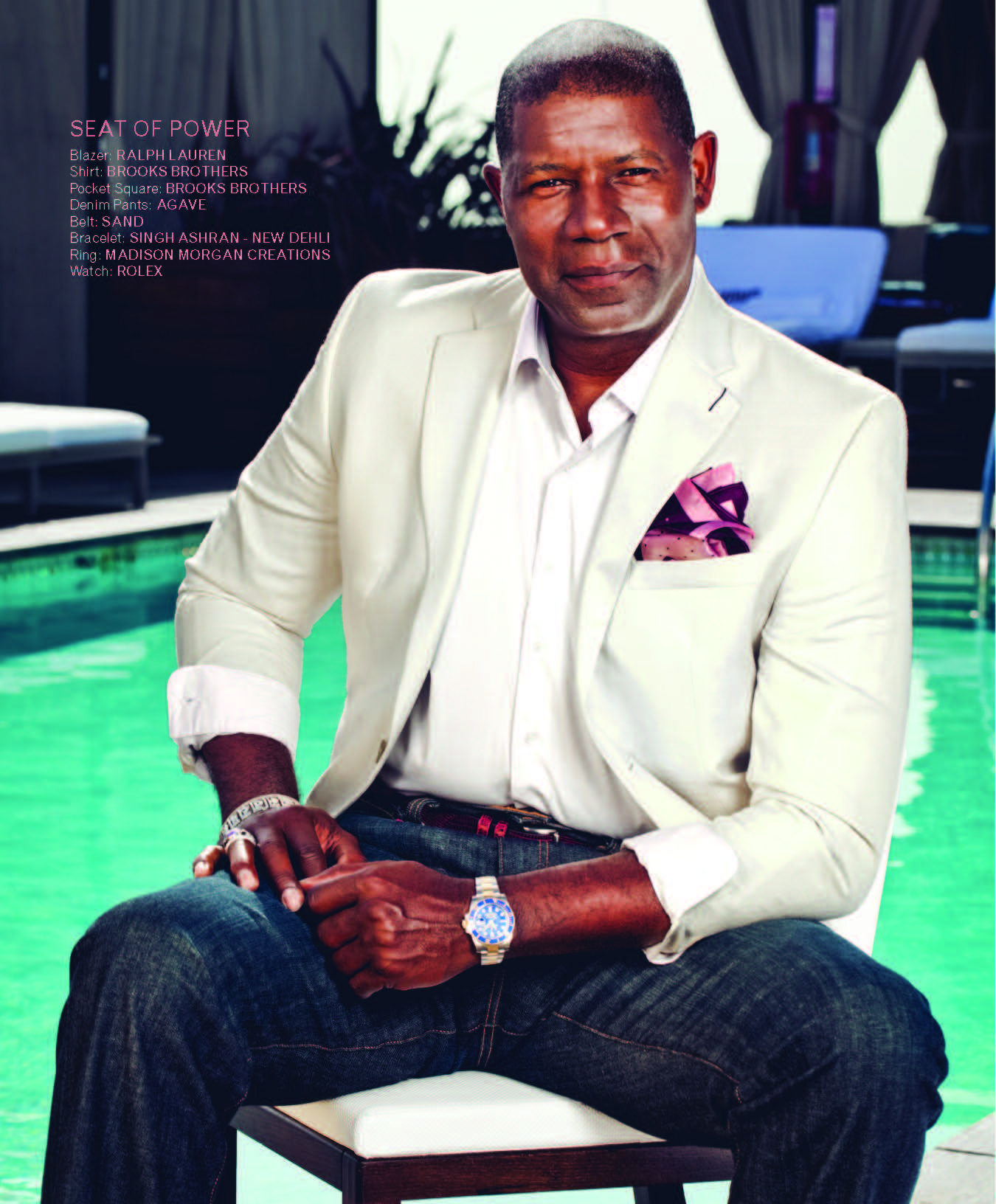
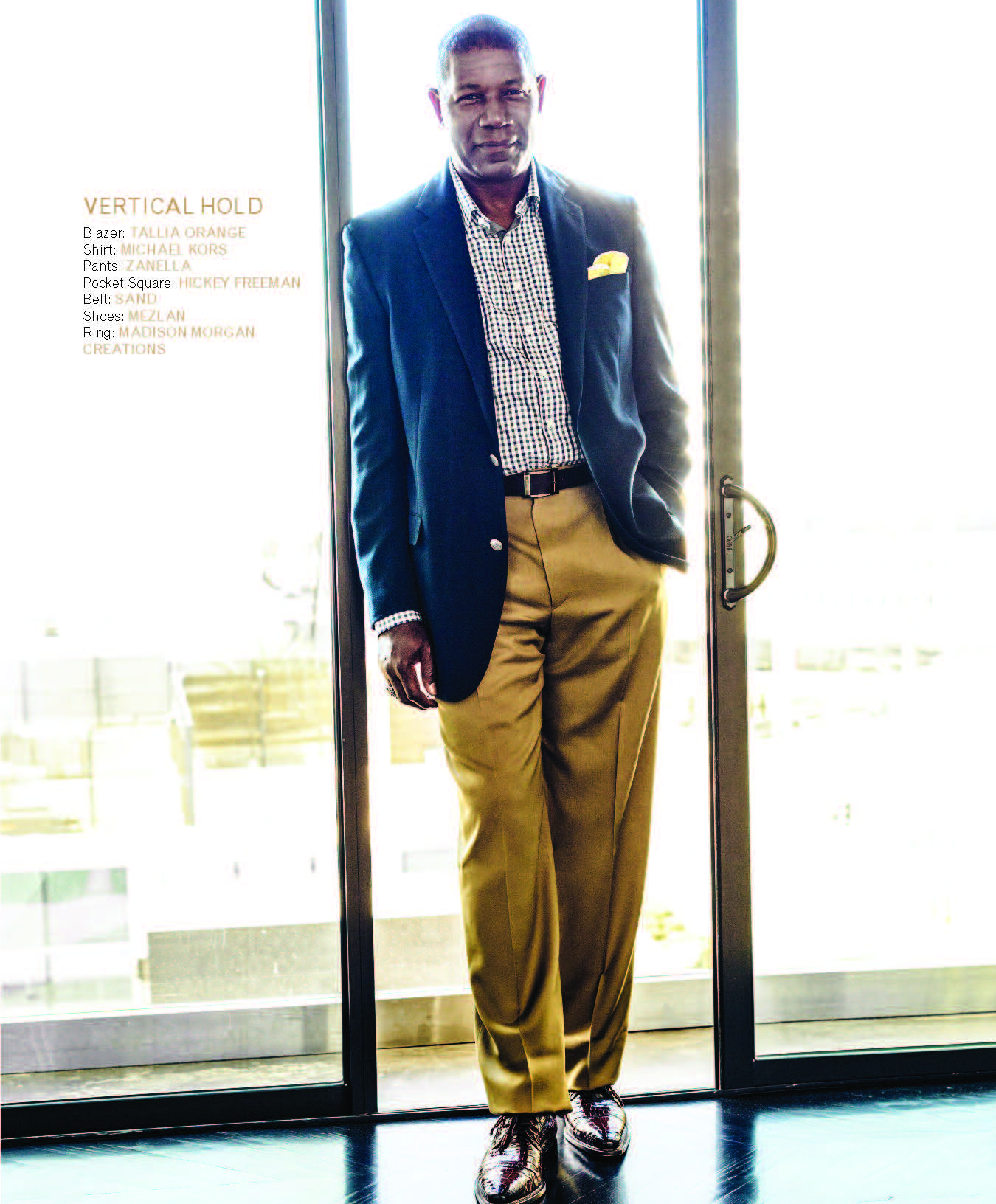



News, views and insights on maintaining a healthy edge.
 In the Blink of an Eye
In the Blink of an Eye
High-powered blue handheld lasers—which some parents purchased for their children this past holiday season—are anything but toys. So powerful is the light from these devices that the normal blink reflex isn’t quick enough to prevent damage when they hit the human eye. Blue laser pointers resemble lower-wattage red and green laser pointers, but can cause much more severe retinal damage in just a fraction of a second—including hemorrhaging in multiple retinal layers, macular pucker and a retinal cavity. Ouch! A recent study in Ophthalmology stated that the lack of public knowledge about blue handheld lasers could lead to an “epidemic of ocular injuries” and called for government intervention.
 Eating Away the Blues
Eating Away the Blues
While newspapers and magazines are full of stories about “holiday blues,” you don’t hear much about the sadness and mild depression that can kick in after the wind-down of endless parties and presents. In many cases, the problem is related to extra pounds we pack on in December and January. The good news is that healthy eating in February and March can not only help you shed that weight, it can also improve your mental well-being. For example, study after study has shown that adding foods rich in Omega-3 fatty acids can be effective in staving off depression. These foods include salmon and tuna, dark leafy vegetables, nuts and flaxseed. Fish (along with low-fat dairy foods) can also boost your mood by boosting your B12 levels. There is also growing evidence that a diet high in selenium can improve mild depression. Fish, nuts, lean meats, beans and whole grains are rich in selenium. Some other rules for avoiding diet-related moods swings include eating a healthy breakfast every day, drinking plenty of water and consuming a healthy snack or small meal every four hours or so for sustained energy.
 16 Going on 17
16 Going on 17
How much exercise is too much exercise? For teenagers, this question almost seems superfluous. Study after study shows that kids simply aren’t active enough. According to sports medicine authority Dr. Michele Gilsenan, by mid-teens, when participation should be high, the opposite occurs and sedentary living becomes the norm for many teenagers. As reported in the Archives of Disease in Childhood, seven hours a week is the recommended “dosage” of sports for most teens; for kids on teams, an average 14 hours delivers the maximum benefit in terms of fitness and proficiency in a sport. However, 17 hours is the tipping point at which strenuous activity becomes detrimental for athletic teenagers. Once that 17 hour maximum is reached, the benefits of sports participation, including improved self-esteem and mental acuity and the reduced risk of depression, appear to diminish. In fact, researchers from the Institute of Social and Preventive Medicine in Switzerland found the risk of depression, irritability and anxiety actually starts to increase. “As young athletes frequently choose a single sport that they play year-round, overuse of the same muscles occurs,”

Michele Gilsenan, DO
Member, Family Medicine Department 732.388.7300
Dr.Gilsenan observes. “In general, early burnout from the sport or physical activity occurs. As a result, we’re seeing a type of injury in younger athletes that was once reserved for those older. Also, with too much sports activity, there is the possibility of reduced concentration, which can lead to potential injuries, too.”
 Nuts to You
Nuts to You
A study published in the New England Journal of Medicine this winter reached the startling conclusion that people who eat a handful of nuts every day have a lower mortality rate by 20 percent compared to those who do not eat nuts at all. That statistic covers death from all causes, but the study pointed specifically to significant differences in death due to heart diseases, cancer and respiratory illnesses. This news is exciting because it involves a relatively simple, un-dramatic lifestyle change. “Nuts contain unsaturated fatty acids, the good fatty acids. They help lower bad cholesterol, the low density lipoprotein (LDL), which is linked to the hardening of coronary arteries that can lead to heart attacks,” asserts

Fayez Shamoon, MD Director, Cardiovascular Services 973.877.5160
Fayez Shamoon, MD, Director of Cardiovascular Services at Trinitas. “Nuts, especially walnuts, hazelnuts, almonds, and peanuts, as recently shown, are also rich in fiber and are an extremely beneficial part of a heart-healthy diet as suggested in a July 2003 Food and Drug Administration (FDA) statement.” The New England Journal reporting further found that nut-eaters were more likely to consume fruits and vegetables, be non-smokers, and get a decent amount of exercise. These links may have something to do with the fact that nuts quell hunger pangs between meals compared to less nutritious snack foods. In a nutshell, Dr. Shamoon adds that eating one to two ounces of nuts daily is highly recommended.
 Vacation Souvenir
Vacation Souvenir
The growing popularity of “nip-and-tuck tourism”—the blending of a tropical vacation with lower-cost cosmetic surgery procedures—is not without risk. In Boston this past fall, hospitals reported several cases of Mycobacterium abscessus infection, involving bacteria that are particularly stubborn when it comes to antibiotics. When doctors looked for a common vector, they found that the patients had undergone cosmetic surgery while vacationing in the Dominican Republic over the summer. Soon, they found that hospitals in New York, Connecticut and other states were reporting similar cases. Mycobacterium abscessus is spread by contaminated medical equipment and supplies, and bad surgical technique, but doesn’t show up until many weeks later. Fortunately, the infection is not contagious. A word to the wise from Board Certified plastic surgeon

Joseph D. Alkon, MD Chief, Plastic Surgery 908.583.5630
Joseph D. Alkon, Chief of Plastic Surgery at Trinitas: “When considering aesthetic plastic surgery, or any type of plastic surgery for that matter, it is important to seek out a board-certified plastic surgeon who is trained and experienced in your desired procedure. Verify the training and credentials of the physician who will be performing your surgery and the certification of the facility where your surgery will be performed. An excellent resource for this is the American Board of Plastic Surgery’s website, www.abplsurg.org. If your physician is not listed here, yet claims to be ‘board-certified,’ then that should serve as a warning and prompt you to ask specific questions about their credentials and training, and their ability to perform your plastic surgery safely.”
 Autism Breakthrough at Yale
Autism Breakthrough at Yale
Research published in late 2013 by the Yale Child Study Center shows promise for oxytocin (OT)—aka the “love hormone”—in the treatment of autism. Areas of the brain governing social functions such as empathy and reward had greater activity after subjects were given an inhaler spray of oxytocin. The effects were temporary and the number of subjects (17) in the study small, but the really encouraging news may be that the brain regions involved in autism may not be irrevocably damaged. Another interesting finding in the Yale study was that children whose saliva had higher levels of oxytocin exhibited more activity in the amygdala, the part of the brain that plays an important role in the processing of emotions. “This encouraging study at Yale challenges what we know about treatment being effective in children only when given by three years of age,” asserts

Romulo Aromin, Jr., MD
Medical Director, Child/Adolescent Partial Hospital Programs 908.994.7028
Romulo Aromin, Jr., MD, Medical Director of Child/Adolescent Partial Hospital Programs at Trinitas. “Children and adolescents with Autism Spectrum Disorders may still be responsive to medication and may still be malleable more than what we thought. Currently, Applied Behavioral Analysis (ABA) has been the evidence-based treatment recommended during this window period. Without such treatment, prognosis will be adversely affected. This study opens utilizing occupational therapy and Applied Behavioral Analysis as intervention arms.”
After five-plus years at Trinitas, the da Vinci Robotic System continues to surprise and impress
By Erik Slagle
If there’s a certain level of art that goes along with the science of surgery, the wave of advances taking place in robotics-assisted procedures could be considered its Minimalist movement. Less cutting. Less blood loss. Less pain. Less recovery time.
Less is usually more when it comes to surgery, and the procedures made possible by innovations such as the Single-Site da Vinci System are bringing surgeons and their patients to the cutting edge—which in many cases means a lot less cutting than in years past. Nowhere around New Jersey is that more evident than at Trinitas, where robotic equipment has transformed the concept of surgery in fields such as gynecology, colon and rectal, and gallbladder removal. The surgeons carrying out these operations often turn to robotics for maneuverability and visibility—consistently leading to more positive outcomes and faster recoveries for their patients.
“The ability to carry out robotic surgeries at Trinitas enables us to be more aggressive in how we treat, while giving us almost unlimited access within the surgical field,” says

Labib E. Riachi, MD, FACOG Chairman, OB/GYN
Director, Robotics 908.282.2000
Dr. Labib Riachi, Chairman of Trinitas’ OB/GYN Department and Director of Robotics. Dr. Riachi has carried out more than 700 procedures since 2009 on the da Vinci System. While at a console, a surgeon can manipulate the “arms” that maneuver a camera and carry out cutting, holding and coagulating all through a single or multi-port precise abdominal incision. Dr. Riachi has used the system to perform corrective surgeries for conditions such as prolapse, fibroids, bleeding, lysis of adhesions and endometriosis, and now trains other surgeons to do the same.
The benefits are easy to see—literally. “This technique provides us with ten times the magnification that we’d have with conventional open and laparoscopic surgeries,” Dr. Riachi says. “When treating endometriosis, for example, we have unparalleled precision in identifying, lifting and excising the lesions. At the consoles, we can manipulate surgical equipment with 360-degree rotation—superior even to laparoscopy. We can hold, dissect, and clean at better angles, and bring in a second surgeon if necessary without having to scrub out—that doctor can sit down at the adjacent console and see exactly what we’re seeing.”
A recent patient of Dr. Riachi’s, only in her 30s, had consulted with nearly a dozen doctors over a 15-year period to treat endometriosis that threatened to claim her ovaries. Still hoping for the opportunity to one day become pregnant, the young woman was desperate to avoid losing her reproductive organs, but appeared to be running out of options. Through the da Vinci method, however, Dr. Riachi was able to clean and correct all of her adhesions and excise all the endometriotic lesions in a single surgery, saving her entire reproductive system in the process.
“For 15 years, this patient had lived with chronic pelvic pain,” Dr. Riachi says. “But thanks to robotics, in cases like hers we no longer have to take out an ovary. We can clean and clear the reproductive system instead. At a follow-up appointment, she said she hadn’t felt this good in years.”
Preserving organs and saving body functions are primary goals of systems such as the da Vinci. Even in cases where Single-Site isn’t an option, surgeons are finding that introducing other types of robotics into the process can yield great results.

Andrea S. Zimmern, MD, FACS Colorectal Surgeon 908.994.8449
For Dr. Andrea Zimmern, colon and rectal surgeries can be carried out using a combination of laparoscopy or open surgery along with a robotic “helping hand” to gain the most favorable outcomes. In Dr. Zimmern’s field, robotic precision can help surgeons carry out procedures that might otherwise prove impossible.
 “The visualization [using robotic equipment] is far beyond anything we’ve had previously,” Dr. Zimmern says. “With robotics, we can perform surgeries that used to be impossible even via laparoscopy. We recently treated a patient who came to us with an abdominal tumor that took up his entire pelvis. The patient was also suffering from obesity, which made his case especially complicated. Even with laparoscopy, we wouldn’t have been able to remove the cancer without giving the patient a permanent colostomy. But the precision of our robotic equipment allowed us to do just that. So we’re learning there are particular instances and cases where the ability to carry out robotics-assisted surgery isn’t just advantageous—it’s really the ideal.”
“The visualization [using robotic equipment] is far beyond anything we’ve had previously,” Dr. Zimmern says. “With robotics, we can perform surgeries that used to be impossible even via laparoscopy. We recently treated a patient who came to us with an abdominal tumor that took up his entire pelvis. The patient was also suffering from obesity, which made his case especially complicated. Even with laparoscopy, we wouldn’t have been able to remove the cancer without giving the patient a permanent colostomy. But the precision of our robotic equipment allowed us to do just that. So we’re learning there are particular instances and cases where the ability to carry out robotics-assisted surgery isn’t just advantageous—it’s really the ideal.”
The use of robotics in surgery is quickly becoming common across a range of fields including cardiology, endocrinology, and general surgery. Robots are now key players in helping surgeons tackle aggressive cancers of the bladder, uterus, prostate, throat and more. With skilled, talented, trained surgeons at the controls, the robots at work in the operating theaters at Trinitas are driving modern medicine into a future that used to exist only in the realm of science fiction. Like its namesake, the da Vinci System is redefining an art form: the art of complex, life-changing and life-savings surgeries.

Rodolfo Colaco, MD, FACS, FICS Chairman, Surgery
908.353.4177
Pioneering surgeon Rodolfo Colaco, MD, underwent specialized training and performed the region’s first robotic single site procedure at Trinitas in 2013. The patient’s gallbladder was removed through one tiny incision in the belly button, making the procedure virtually scarless.
SOAR! addresses the retirement needs of the ‘religious elderly’
By Diane Alter
 In the secular world, we don’t think much about the retirement needs of Catholic priests, sisters and brothers. Yet, as exceptional and unwavering as they are in their devotion to others, they are just as susceptible to the challenges of aging as we are. Perhaps more so, in fact.
In the secular world, we don’t think much about the retirement needs of Catholic priests, sisters and brothers. Yet, as exceptional and unwavering as they are in their devotion to others, they are just as susceptible to the challenges of aging as we are. Perhaps more so, in fact.
Many turn to Support Our Aging Religious (aka SOAR!). Based in Washington, D.C., SOAR! is a non-profit, grant-generating organization that connects people of all religious denominations, all across the country, whose lives have been touched by unrivaled contributions from the professional Catholic community. Its aim is to raise funds, educate the public about serious retirement needs of the “elderly religious” and develop a national network of those who want to help.
“We support priests, sisters and brothers of religious orders,” says Sister Kathleen Lunsmann, President of SOAR!. “While we don’t support diocesan pri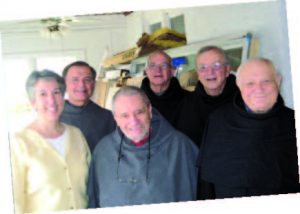 ests, we do support Franciscans, Dominicans, Benedictines, etc. However, it’s primarily sisters who are most in need of our help.”
ests, we do support Franciscans, Dominicans, Benedictines, etc. However, it’s primarily sisters who are most in need of our help.”
Born and raised in New Jersey, Sister Kathleen is a former member of New Providence’s Our Lady of Peace Parish, where she remained until entering The Congregation of the Sisters, Servants of the Immaculate Heart of Mary in Scranton, Pennsylvania. However, with siblings and their families still in the Garden State, Sister Kathleen frequently comes back across the Delaware. A recent visit included a stop at the Conventual Franciscan Friars in Seaside Park to bring them a grant check for $25,000. The money will be used to replace windows in the home of retired Franciscan priests.
“In my position at SOAR!, I am honored to raise money to help elderly sisters and brothers,” she says. “These dear religious men and women have given their lives in service to others and now it’s time for us to give back and care for them. For most of their working years, sisters who are now retired received little compensation for their work in schools, hospitals and parishes. Today, it’s different. Congregations are compensated for the work of the sisters. But retired sisters need to rely on benefactors like their former students to help them in their aging years.”
The sisters are not asking for much, explains Sister Kathleen. For example, they might need funds for a bathroom renovation to accommodate a wheelchair. Or there might be a need for money for a stair lift so sisters can access a floor on their own.
For more information on SOAR! log onto soar-usa.org.
Five of the Costliest Legal Mistakes You Can Make
A recent poll revealed something we all secretly knew. More than half of the people who make a list of New Year’s resolutions fail miserably when it comes to following through… and nearly one in five blows it within the first 24 hours.
There are some lists, however, that you would be wise to tuck away. As lawyers, we are often asked about the kinds of legal mistakes people commonly make that are either costly to resolve, or impossible to undo. Many, if not most, of these mistakes involve being “penny wise and pound foolish.” Then again, diplomacy aside, some of these mistakes are just plain stupid. And yet we see them made again and again.

Photo credit: iStockphoto/Thinkstock
If you must make a list of resolutions for 2014, try this list of the Top 5 legal blunders to avoid. Although they may not sound as exciting as dropping 20 pounds, or getting around to organizing your basement, we promise that your year will turn out all the better for being safe rather than sorry.
Hitting the “Reply All” (and Send) Button When You Don’t Mean To
We’ve all done it. We receive an email that has been cc’d to a group of other recipients who may be friends, (or not), or co-workers (or not), or—in a business situation—on “our side” (or not). Often we are tempted to make a snarky comment to one of the other recipients, but instead mistakenly hit the “Reply All” button. Oh no! Well, you can’t take it back. Usually this is just embarrassing, but in the context of a business transaction or litigation, it can be devastating, especially if the “Reply All” reveals confidential information, such as strategy or facts unknown to the unintended recipient(s). Imagine you are selling a company and you receive an email from one of the bidders. Your “Reply All” message, intended for only one of your partners, says, “I hope the dope doesn’t know he’s bid twice what anyone else has.” Enough said. Bid withdrawn!

Photo credit: iStockphoto/Thinkstock
Venting on Social Media
Social media is a blessing and a curse. Venting your rage at someone or damning something online may feel good at the time, but before you tweet or post in anger, consider the consequences. If the target of your rage is a person or group of people, or even a company (indeed, especially a company), you could be sued for harassment, libel or defamation. Most of the time, you cannot undo what you’ve written, which will live forever somewhere on the Internet. Rage, exaggerations, negative commentary or false statements—these can lead to reputational damage, negative employment consequences, and a costly legal mess. You may recall in the headlines the case where Donald Trump sued a contestant in the Miss Universe Pageant (which Trump owns) for making defamatory statements about the pageant on Facebook. Trump won a $5 million judgment! Even those without such means can take to the Internet and respond in kind, or file an action publicly in the courts. A few words can cost you thousands.
Failing to Document Contractual Relationships
Ah, trust. How quaint. So-called “handshake” agreements are very dangerous things. This becomes frighteningly apparent when a dispute arises among the parties. It can be very difficult to establish the existence of a valid oral agreement (as opposed to an agreement in writing). And even if an oral agreement is established, its terms are often difficult to interpret or define. It is not uncommon for us to see a client who believed he or she was a “partner” in a business only to discover he or she had no rights at all. Or, take someone who thought he or she had purchased or sold an order of goods or services, only to discover the other side was not obligated to provide or pay for the order at all. Handshakes are yesterday’s news, today’s blues. “Get it in writing!” We like to see written agreements as road maps, with clear directions and goals on which the parties can agree at the outset of the relationship are reasonable and fair. In nearly all cases, both parties benefit from putting pen to paper after that handshake.
Using Legal Documents Downloaded from the Internet
Really? Think you can save some money this way? Think again. This is not a matter of professional jealousy or “guild mentality.” We are constantly having to do remedial work, which is far costlier than the original work that might have been performed, for clients who have used downloaded documents. The fact of the matter is that there is very little that is “cookie cutter” in legal relationships. A well-drafted legal document requires the attorney to fully understand the circumstances and desires of the client and, the client’s counterparty, to suggest key provisions or alternatives that should be in a contract—be it an employment contract, a lease, or a limited liability company operating agreement. The location of the parties is relevant; the place of business is key; and many laws vary from state to state. We have found that these “one-size-fits-all” documents are incapable of that. In addition, they often contain poorly drafted language or outright errors. A lay person attempting to modify a document to suit his or her circumstances can often miss key issues or alternatives that are available to a competent attorney. The result can be disaster when key elements work in favor of the other party or the document itself is invalid.

Photo credit: iStockphoto/Thinkstock
A couple of years ago, we were presented with an agreement obtained by the Executive Director of a non-profit organization, laudably trying to save his organization money. But in the end, he cost it a bundle and lost his job in the process. The E.D. had fired another senior employee (who happened to be female, older than he, and next in line for the top spot), using paperwork obtained “for free” online. His first mistake (perhaps after the termination decision itself) was having downloaded the Separation Agreement from the Internet. Bad enough the “free” legal form related to a different state—but it was not actually applicable to a senior executive, it omitted legally required terms, and it involved a terminated employee under 40 years of age. In short, it did not apply to the organization’s situation where a female senior officer, 40 years of age or older, was being let go without any prior notice. It was the wrong agreement.
Federal, state and local requirements kick in to require that certain terms be included in a Separation Agreement that has a general release of claims following the termination of an older female…none of which were reflected in the downloaded form agreement the E.D. had obtained. Making matters worse (for the organization), he had already handed the employee whom he was firing the downloaded Separation Agreement during the actual termination meeting. Now that was warm and fuzzy. The E.D. then told the soon-to-be-ex-colleague that the (incomplete and illegal) Separation Agreement was a “take it or leave it” offer that would expire in three days. (What was he thinking?) Among other things, the federal age discrimination laws permit older employees who are being terminated from employment to have 21 days within which to review and consider a Separation Agreement and, after signing, seven more days to revoke it. This was one of numerous omissions in the “free” downloaded version. (We suspect a different agreement was used when the E.D. was later fired.) In the end, the misguided effort to save his organization some money cost the non-profit tens of thousands of dollars to forestall a lawsuit by the ex-employee and fix an agreement that a seasoned employment lawyer in the right state would have taken just a few hours to prepare.

Photo credit: iStockphoto/Thinkstock
Founding a Company without Having an Employment Agreement
A company founder/CEO should always consider having an employment agreement, because once the company has taken in substantial amounts of outside money from any sophisticated investor, he or she may become an endangered species. We know of a situation involving a senior executive who was in distress after he had just been fired by the company he founded. Bad enough that he got squeezed out of his own company, but it got worse. Without an employment contract, he had no rights, no severance and no recourse. He had founded a tech company with an innovative concept that was just beginning to achieve wide acclaim. As is the case with many others in his circumstances, he needed more funding and brought in a well-known venture capital firm. The founder still controlled the largest block of stock and thought he was set. He avoided signing an employment agreement because he did not want to be subject to restrictive covenants like non-compete and confidentiality agreements. However, a typical executive employment agreement also contains protective provisions, such as an employment term of years, or severance if things don’t work out—which can be a multiple of the executive’s compensation if he or she is terminated without cause or quits for “good reason.”
In this case, as is typical, the venture capital firm took two seats on an already small board. The (now fired) founder had handpicked two other directors and, with them and himself as a director, believed he controlled the board. Within less than a year, however, the venture capital firm had co-opted one of the founder’s handpicked directors, and convinced him that the founder was not the right guy for the job of leading the company to success. The company was in an “at will” state where the laws provided that an employee could be terminated for any reason (or no reason) at all, at any time, without notice or severance…which is exactly what happened to the founder, who thought he was pretty crafty to keep away from signing an employment agreement. So much for being the smartest guy in the room.
Still think you’re the smartest guy (or gal) in the room? To read about five more legal mistakes that intelligent people make every day log onto edgemagonline.com.
- Hiring Unpaid Interns or Otherwise Misclassifying Employees
- Failing to Protect Your Intellectual Property (or Infringing on Someone Else’s)
- Collaborating on Original Work without an Agreement
- Getting Married (or Remarried) without Consulting a Lawyer
- Failing to Take Action When One Employee Is Harassing Another…or Creating a Hostile Work Environment EDGE
Editor‘s Note: Helen D. (“Heidi”) Reavis and Neil Patrick Parent are Partners with Reavis Parent Lehrer LLP, based in New York City. The above does not constitute legal advice; readers are urged to seek the assistance of a qualified attorney in their location in connection with any of the areas of law discussed generally above.
The word “magnetic” is thrown around a lot in show business with little regard for what it actually means. Of the many words that have been used to describe Dennis Haysbert, it is difficult to think of a better one. Indeed, most actors labor their entire lives to achieve what seems to come so naturally to him. Add great passion, talent and commitment—along with a refreshing dose of self-awareness—and the result is a performer who knows how to command both screen and stage. EDGE Editor-at-Large Tracey Smith hoped to discover what makes Haysbert tick, and perhaps got a bit more than she bargained for. However, as their conversation shows, she was in good hands from start to finish.
EDGE: Let’s start by talking about your portrayal of authority figures. It takes more than a big body and big voice to carry it off. Who were the authority figures you modeled yourself after—who are you channeling as President of the United States in 24 or as the Allstate spokesman?

Photo courtesy of 20th Century Fox
DH: For 24, I channeled a number of presidents, and a number of individuals that were high in integrity. Some may be controversial, Tracey, but they were my choices and I still stick with them. Colin Powell was one of them; his character is beyond reproach as far as I’m concerned. I think he’s just an amazing man, who I think would’ve made an amazing president. Why didn’t that happen? I don’t know. I can speculate until the cows come home and never really find a real enough or true enough answer for that question. Jimmy Carter, another man of high integrity, was considered weak, but I fail to see what people thought was weak about him. I believe he was a gentle man. I think he was a very fair man. In the world of politics in which we live, it’s very difficult to be a really, really good man. The other is the one that they thought was the “original” first black president [laughs] and that is William Clinton. There is just something about him that is, like, “You know what? I don’t care what color you are or what gender you are, where you’ve traveled, if you are in this country, and if you are a citizen of this country or a citizen of this world—you’re going to be treated right.” That’s what I got from him.
EDGE: And Allstate?
DH: I think I got that role because I was President David Palmer on 24 and people saw me as being very trustworthy. And that’s a good reason. Because I am. And I understand that the attorneys won’t allow me to say anything that they can’t back up, so I’m pretty secure about what I’m saying to the public.
EDGE: There is a serious nature to the sales pitch in those commercials.
DH: The foundation of the campaign was built on that. I don’t really consider myself a salesman. I consider myself an advocate. And I am presenting the country with choices. And you have your right to choose. You want to follow the Gecko? Or you want to follow Flo? Or you want to follow the professor? You want to follow the camel that’s asking you what day it is [laughs] but you really don’t know what it is he’s selling? Yes, you can be entertained and be entertained…but you can also be entertained and told the truth. And that’s what I, and the company, have chosen to do. There is a reason why the other insurers are not doing what we do. It’s because we’re already doing it. So they have to find other ways.
EDGE: Which entertainers were your influences as a young man?
DH: I’ve been an athlete all of my life and I have some phenomenal athletes in my family; my brothers were incredible. So I had a lot of athletes on my wall. But I also loved movies at a very young age, and there were a lot of artists and actors that I really enjoyed. There were three of them in particular that I actually had on my wall: Brando, Olivier and my mentor now, Sidney Poitier. There were a whole lot of actors that I liked, including Montgomery Clift, Roscoe Lee Brown, Ivan Dixon and James Earl Jones, but those first three stood out to me. There were women that I really enjoyed, too, like Katharine Hepburn and Audrey Hepburn. And Cicely Tyson, Diahann Carroll. These people were blazing trails, and were coming around at a time when things were seemingly opening up for black people and for people of color in general. When Bill Cosby did I Spy, I said “What?!I Spy? Really?!” When Sidney Poitier did Brother John, a little known movie that people seldom talked about, it blew my mind that they were making movies like this. I knew what was possible. When the role of Jonas Blane came up? Oh man, I was ready to step in! Oh yes…this is what I was built for.
EDGE: How did it feel when you began pursuing this passion?
DH: When I first started to act? Oh, it felt like coming in out of the cold and being wrapped in a heated blanket. It was immediately comfortable. I would get so deep into my characters I’d get stuck in them. I realized that I had to come off of that, I had to back up. One of my instructors told me, “When you’re on stage, you are that character. You are everything you want that character to be. But five feet after you come off that stage, you have to become Dennis again.” So there was a switch I had to develop, and I just had to turn it on and off, activate and deactivate.
EDGE: What are some of the other key moments in your development as an actor?
DH: I went to the American Academy of Dramatic Arts. I wanted to be classically trained, I wanted people to take me seriously as an actor. So I guess that was one moment, attending the Academy. I guess the next moment was when I was working with John Lynne, who I thought was absolutely amazing. He is no longer with us, but his teaching is still with me…you’re making me go back to a time…it’s rather emotional for me…he was an amazing instructor and an incredibly good man.
EDGE: You worked with Ed Asner on the show Lou Grant.
DH: Ed was the consummate professional. I worked early in my career with Tom Berenger. He was at the height of his career in Major League. Another good person was Gene Hackman. And Clint Eastwood, who is a very incredible source of performance energy for me.

Photo courtesy of Upper Case Editorial
EDGE: Was there a “eureka moment” early on, when you thought Hey, I can do this?
DH: I guess when I got my first job, when I got hired for the first time. Coming from where I come from, I didn’t have any connections, I didn’t know anybody when I got into the business. I was very grateful. [laughs] I don’t think I’ve ever sat down and just said, “Man, Dennis you’re terrific.” I don’t think I have ever said that. As soon as you start thinking “you’re all that” I think you lose it. My M.O. is I perform roles the way the people actually define them in their life. When a doctor comes up to me and says, “You know what? That’s what we do,” that’s the best compliment I can get. There were some baseball players that came up to me and said, “Man! You played Cerrano like—oh, man—we love Cerrano!” If a baseball player tells me that then I must’ve done something right. When I have politicians or the President greet me and say, “I see we have the first black president here in the room,” I say, “Thank you.” When I have Ethel Kennedy tell me that I was partially responsible for Barack Obama becoming president, that humbles me, that kind of brings me to my knees a little bit. What? Really? When I play Command Sergeant Major Jonas Blane and then go to Iraq and Afghanistan to visit the troops, and they tell me, “This is the show we watch here”…I mean, you’re in a war zone and you’re doing a show about black ops and you have guys that perform those black ops say you’re doing it right— that’s a compliment for me! You’ve got to remain grounded, because what you’re doing is taking on personalities, you’re taking on characters, and you can’t have an ego about that. You can’t be outside your body looking back saying, “Boy, I didn’t do that right,” because then you’ll miss the next moment, and any actor will tell you that you have to be in the moment.

Photo courtesy of Upper Case Editorial
EDGE: On 24, did they tell you the character arc would include being president?
DH: No. That may have been their plan but it’s not something that they had divulged to me. All I was at the time was Senator David Palmer running for president in the primary.
EDGE: Did that role get you more interested or more involved in real-life politics?
DH: I aspired to…but then I got Allstate and I was working for a Fortune 500 company. I could no longer voice my opinion publicly about politics. I could donate my money, go to functions, shake hands and things like that, but I really couldn’t talk about politics. So I don’t.
EDGE: Would you ever consider running for office? Clint Eastwood, Ronald Regan, Sonny Bono…Dennis Haysbert?
DH: Maybe for a quick second. [laughs] I have a number of friends in politics in Sacramento who actually have said to me, “If you keep your nose clean, you portray a positive role—we could put you in the Senate” What? You could do what? Hmmm. I don’t think so!
EDGE: You’ve done one of the toughest things to do in film—convincingly portray a baseball player—in more than one movie. Can you handle a bat as well as it seems?
DH: Well, in all modesty, yes. All the home runs that I hit in the movie I actually hit out, but they just didn’t go as far as they shot them out. That is probably the most fun I’ve had on screen, playing baseball and getting paid for it.
EDGE: Which sports did you play in high school?
DH: I played football and ran track. I also played a little bit of basketball, but that was during our theater season, so I didn’t play a lot and I was marginally good at that. But I always loved basketball, and I loved track, I loved football, and I loved to fence, especially stage fencing.
EDGE: Your character in Far from Heaven was incredibly complex. Was that an easy role to play for you—did you have personal stuff to draw on—or did you have to dig as deep as it looked?
DH: I will say this: love is love and we really can’t choose who we love. We think we can, but you can’t pinpoint one person, and go out and say, “You know what, I’m going to love them and they’re going to love me back,” and go out and do that. I wish it were that simple. Sometimes your chemistry is such that you’re going to attract a certain person, and it has a lot to do with where you are energetically at the time, how clear you are, because sometimes you draw the wrong people towards you, and it’s incredibly hard to release them—even when you know they’re not good for you. Do you know what I mean?That’s something that hits everyone.
EDGE: What kind of response did you get to that performance?
DH: I can’t tell you how many women in their sixties came up to me with tears in their eyes and whispered to me, “That was my life”…and how my jaw dropped to the floor.
EDGE: What will we be seeing you in during 2014?
DH: I have Sin City: A Dame to Kill For, in which I reprise the role of Manute, who was played by the late Michael Clarke Duncan. I have a couple of independents coming out—The Life of a King, which is a story about an ex-con who comes out of prison and teaches chess to inner city kids, and Welcome to the Jungle, which premiered at the 2013 Newport Beach Film Festival. Welcome to the Jungle is chock full of really brilliant comedians. It was one of the few times I felt out of place in a movie, because I wasn’t a comedian. But they gave me such funny lines to say. It is also the first comedic appearance by Jean Claude Van Damme, who is actually really funny. It was a fun movie to do. This March, I have a part in Mr. Peabody and Sherman, a DreamWorks Animation comedy, which is a spinoff off of Rocky and Bullwinkle. And Think Like a Man, Too, which came out at the end of 2013.
Editor’s Note: Read more from the EDGE interview with Dennis Haysbert at edgemagonline.com!
Jazz guitarist and composer Pat Metheny copped his 20th Grammy in 2013 for the album Unity Band. He’ll be performing at the Count Basie in Red Bank and at Town Hall in New York this March before embarking on a spring tour of Europe.
What excites you, what challenges you, when you pick up a guitar?
To me, the guitar is really just a translation device. While I am aware of the kind of cult-like thing that surrounds the instrument with guitar magazines, guitar collectors and people who are mostly interested in the instrument as a kind of iconic element in our culture, for me it is just a way to get ideas out into the air. Having spent now a huge amount of my life with a guitar in my hands, the connection between the musical ideas I have and the ability to execute them on the instrument is pretty complete—although I am always striving to make it better. The main thing for me, however, is the ideas themselves, more than the tool used to bring them out in sound.
Where do newcomers to your work discover the “quintessential” Pat Metheny experience?
Live performance has always been the most important thing for me. I have taken making recordings much more seriously over the years. Early on, I saw it as kind of an “ad” to get people to come to the gigs But I think live is the way to go, even though I also like the records.
Does performing live and touring get old…or is it an opportunity to take risks and explore?
Since improvisation is at the heart of everything I do, it makes each night have a whole new set of possibilities. Playing live night after night with great musicians is one of the great privileges of life for me.
Given how diverse and adventurous your music has been, is there a particular album or song that really gets to the heart of who you are?
It is hard for me to say. I feel like all the records are one long single record. Each is a chapter in a long single book. I have used different musicians along the way to get to different things, but each choice that I made— to use this person or that person, or to write this way or that way—has been in the service of getting to a central point that was kind of initially described on Bright Size Life and seems to still be at the heart of everything.
When you’re assembling players for a project like the Unity Band, what are you looking for in the artists you choose?
Each project has kind of different demands, and I try to put together a group of musicians who can tell that particular story the best way it can be told. I like musicians who have a point of view and a developed sense of who they are as people. Also, I have to admit, it carries over to the things off of the bandstand, too— as the years have gone on and I have young kids at home, I like musicians who are adult and secure in who they are. My capacity for adults who act like children is pretty much zero at this point. But the main thing is the ability to listen. The degree to which someone is able to hear into each moment and respond to it in a deep and meaningful way regardless of what their role is, is the essential thing for me.
Editor’s Note: Editor-at-Large Tracey Smith actually squeezed an additional five minutes out of Pat in their Q&A. To read more about the Unity Band and the upcoming tour, log onto edgemagonline.com.




